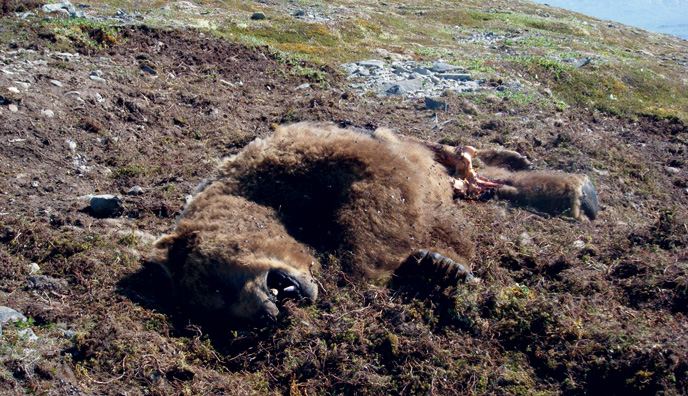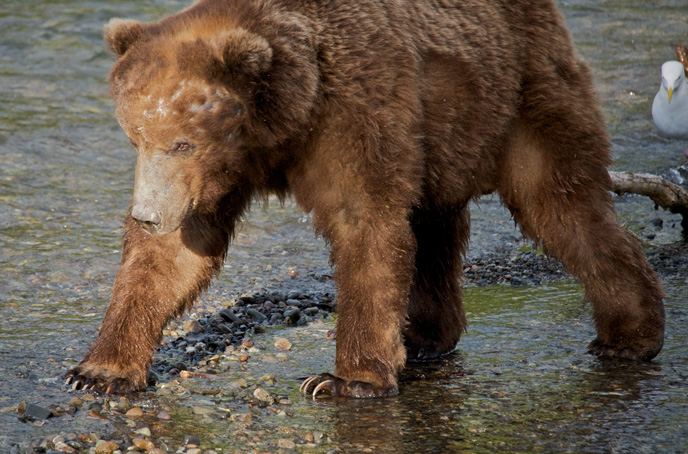One year ago, bearcam favorite 130 Tundra was found dead at the cut bank along Brooks River. Her death provided another example that bears face significant risk in their daily lives. What causes the death of a bear?

This dead bear was found on the slopes of Mount Katolinat. In Katmai, one of the main natural causes of bear mortality is other bears. This bear was apparently fed upon by other bears, but the true cause of its death remains unknown. NPS photo.
Wild bears are subjected to many risks during their lives. Starvation, spring time avalanches, illness, injury, and predation are just some of the reasons that bears may die. Outside the boundaries of Katmai National Park, bears can be hunted for sport and subsistence, and humans are significant cause of mortality for bears in many areas of the world. In contrast, Katmai National Park is one of the few places where the population of brown bears is naturally regulated.
Dead bears are rarely found in the wild. Even in Katmai, a place with some of the highest densities of bears anywhere in the world, rangers and biologists rarely see a bear die or find dead bears. Still, the information gathered by biologists in the past that can help us glean some knowledge about the end of a bear’s life.
During the past 36 years at Brooks River, only about 13 cases of bear deaths have been documented. Almost all of these deaths were caused by other bears. Most of the bears that died were subadult bears or cubs. One study on the Pacific coast of Katmai recorded 17 natural mortalities of female bears from 1989-1996. Eight of those 17 adult females were killed by other bears. One female apparently died of starvation and one died after being caught in a spring time avalanche. Six females died in the spring, six died in the summer, and four died in the fall. During that same study period, one adult male and subadult male were found dead and both appeared to have been killed by other bears.

In 2008, this adult male bear died in the Brooks River from unknown apparently natural causes (see bear #219 on page 79 of Bears of Brooks River ebook for more information). NPS/R. Wood.
While brown bears can live more than 30 years, they commonly live to be 20 years old. Most bears, however, live short lives. While Katmai may have some of the highest densities of bears in the world, it also has one of the highest mortality rates for cubs. Two out of three cubs may not survive their first year.
From 1989-1996, 99 cubs from 48 litters were tracked via different radio-collared females. 61 of those cubs were lost, including 11 mothers, indicating that the survival rate of females with cubs is lower than single females. This is a very low (0.342) survival rate for cubs, one of the lowest ever measured in North America.
Katmai’s bears live in an unforgiving world, and it can be hard to watch an adult bear or cub die. As wild animals, they receive no veterinary care or preventative medicine. Bears have evolved to bear tough and resilient animals, but their lives do come to an end, sometimes peacefully and sometimes painfully.
